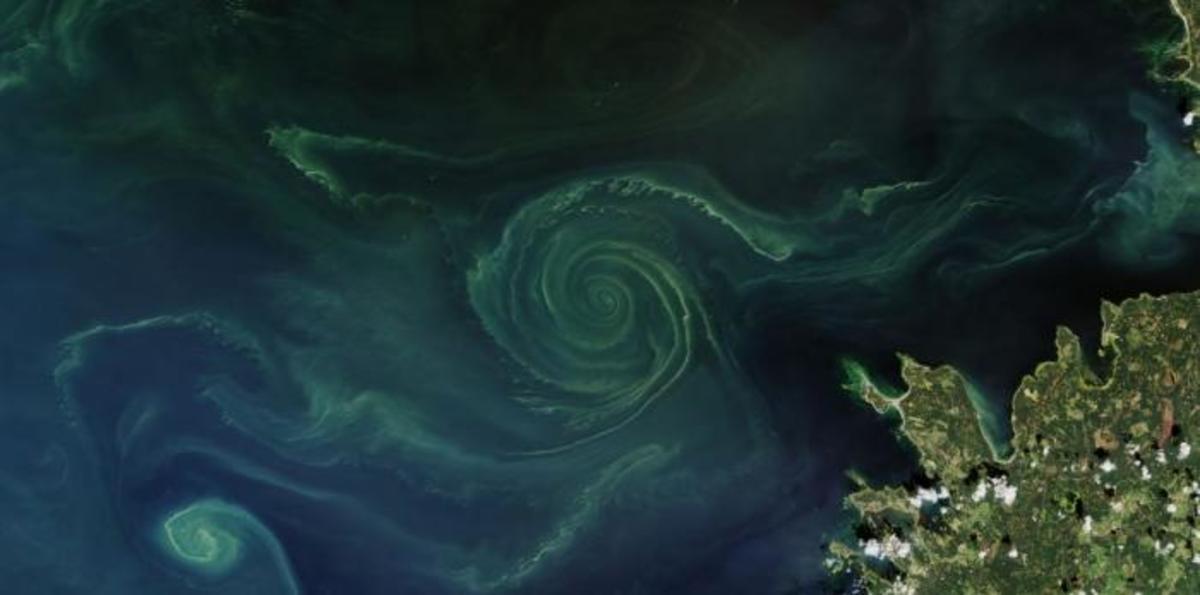PAOC Spotlights
Climate futures

Read this at MIT Spectrum
Climate issues are politically polarized in the United States, but that’s not the only reason it’s been difficult to curb global warming, says Raffaele Ferrari, the Cecil and Ida Green Professor of Oceanography in MIT’s Department of Earth, Atmospheric and Planetary Sciences (EAPS).
“Uncertainties in our climate forecasts are so great, we often can’t guarantee that taking a particular action will have the desired result.” This is one reason Ferrari teamed up with fellow EAPS professor of oceanography and climate science John Marshall, along with other MIT colleagues, on an ambitious venture called the Climate Modeling Alliance (CliMA). Launched in 2018 in collaboration with researchers at Caltech, the NASA Jet Propulsion Laboratory, and the Naval Postgraduate School, CliMA is utilizing recent progress in computational science to develop an Earth system model that can predict droughts, heat waves, and rainfall with unprecedented precision.
“We agreed to start from scratch rather than building upon existing climate models, some of which dated back to the 1960s and ’70s,” Ferrari says. “To do something really new, we had to engage the computer science community,” capitalizing on advances in programming languages, computer architectures, and artificial intelligence techniques.
Clouds and eddies
The team has also brought new science into its models, working to incorporate small-scale climate features and processes that most predecessors could not accurately represent. “Large-scale and small-scale processes are always interacting” in the oceans and atmosphere, Ferrari explains, which is why small-scale turbulent processes are crucial to the new model. “Everyone involved in CliMA agrees that they contribute to the greatest uncertainties in projections.”
For example, the amount of heat and carbon taken up by the oceans, a key factor in climate models, is strongly influenced by “turbulent eddies,” circular swirls, or vortices, of water 100 kilometers in diameter. In the atmosphere, small convective eddies arise when surface air, laden with moisture, is heated by the sun and lofts upward. Clouds, which form when this water vapor condenses, reflect sunlight and absorb infrared radiation from the Earth’s surface, significantly affecting climate. They’re another small-scale feature that CliMA researchers are determined to include in their model.
“We’re not trying to represent every little cloud and eddy,” Marshall says. “But we know the laws that govern such small-scale turbulence, and if we can train our parameterizations (or approximations) on highly resolved sub-models of them, we believe we can enhance the fidelity of our global-climate models.”
The goal of this exercise, Ferrari says, “is to be able to predict something in the future for which we don’t have data. That will require a new way of doing machine learning that learns from the data continually coming in and also takes into account the laws of physics and thermodynamics.”
MIT computing power
Fortunately, MIT has an abundance of computer science expertise that CliMA is using to meet this goal. For starters, the project elected to use Julia, a dynamic programming language invented at MIT that’s designed for scientific computing. “It was a bold choice,” admits Valentin Churavy SM ’19, a CliMA team member and doctoral student in the Department of Electrical Engineering and Computer Science, “because Julia hadn’t been used on such a big science project before. But the language part of this effort has worked out well.”
Ferrari agrees. “The Julia gamble has really paid off.” The majority of existing climate models run on Fortran, a programming language created in the late 1950s that is unfamiliar to most people under 30. “I’m glad I can finally stop using my grandfather’s programming language,” says Ali Ramadhan, an EAPS doctoral student on the CliMA team.
That’s fitting, Marshall says, because CliMA is all about the future. Limitations in existing models have, for decades, led to inaccuracies in climate projections. “We need new approaches, and CliMA is offering a new route forward that should keep us going for decades to come.”
Steve Nadis is a 1997–98 MIT Knight Science Journalism Fellow.
Story Image: Phytoplankton swirls reveal underlying currents, eddies, and flows in the ocean. Small-scale turbulent processes like these are crucial to the new climate model. (Photo: NASA Earth Observatory)